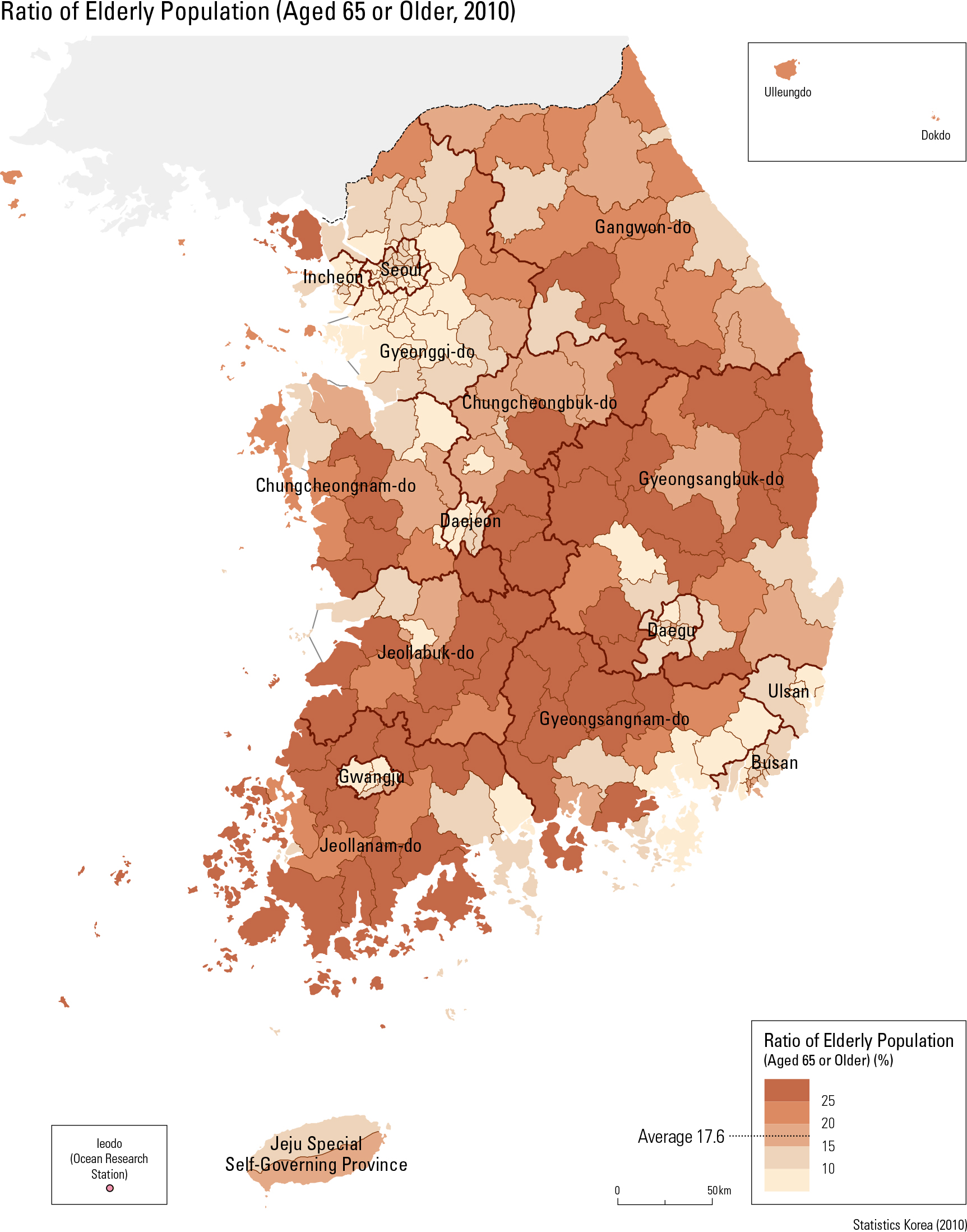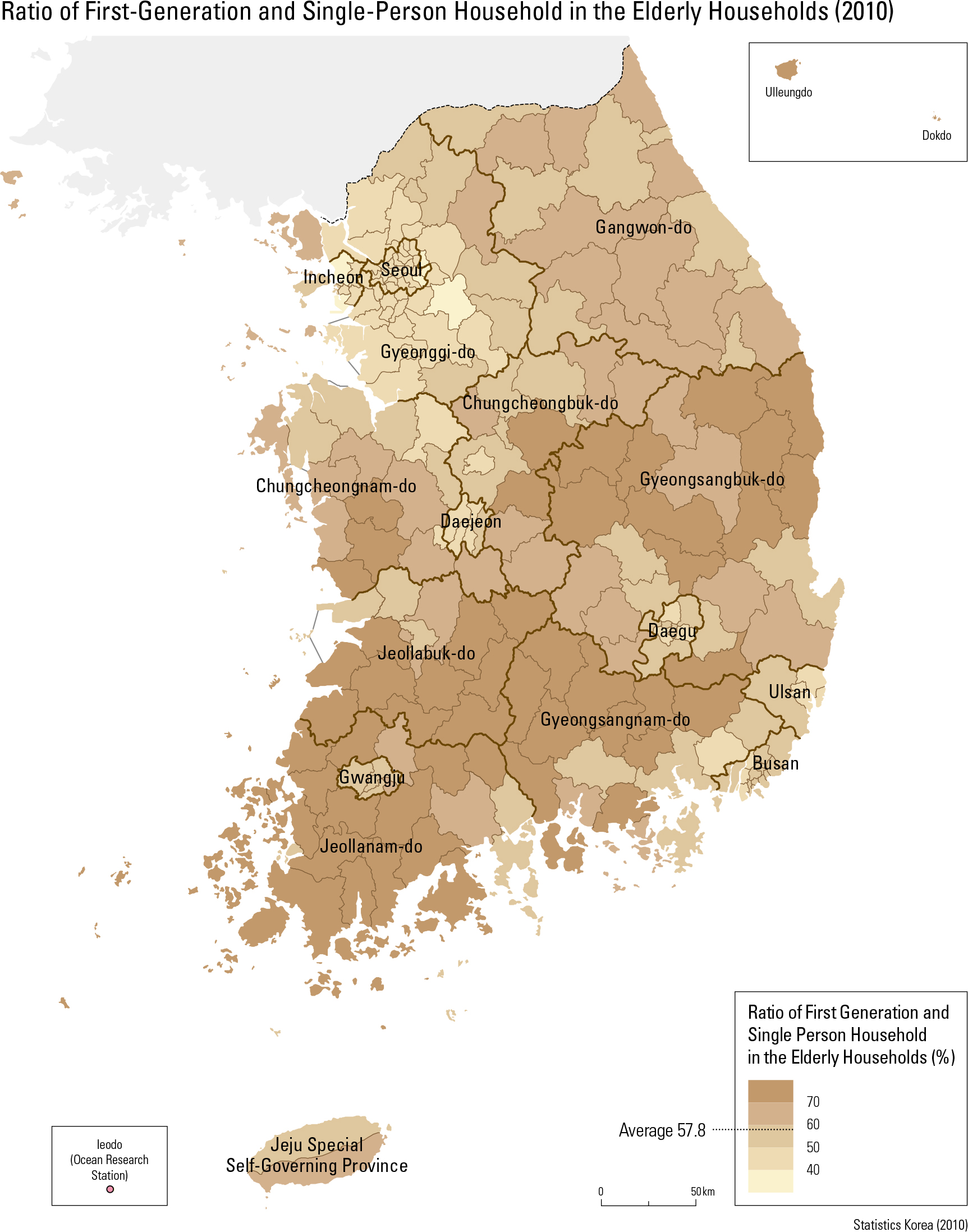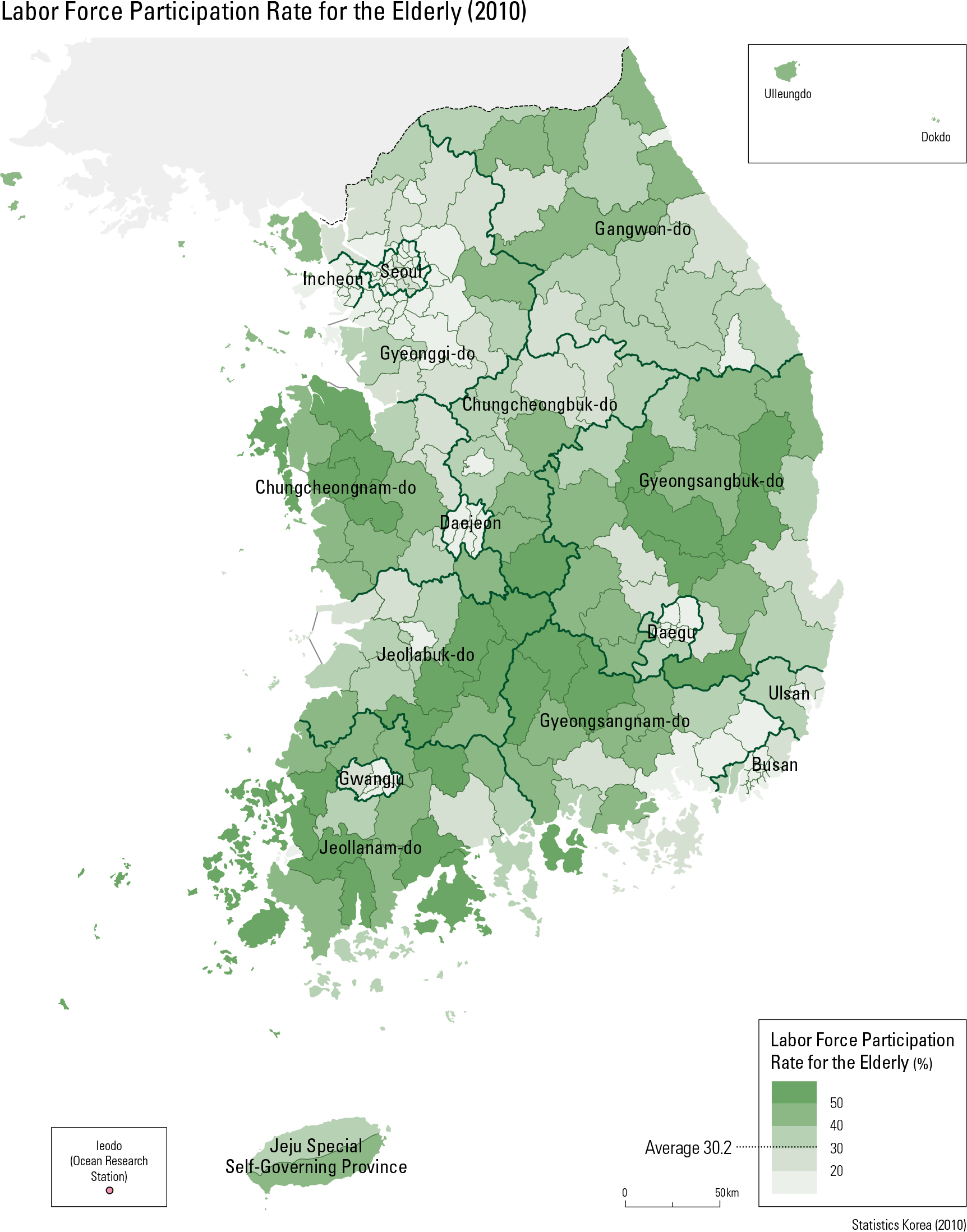English III
Due to a rapidly decreasing birth rate and ex- tended life expectancy, Korea’s population is ag- ing very quickly. Korea’s elderly population (aged 65 or older) increased from 2.16 million in 1990 to 5.42 million in 2010. An important element in the quality of life of the elderly is whether they live with their children. In 1990, about 54.2% of elderly households lived with a child or grand- child (two or more generations). However, this ratio dropped to 30.8% in 2010, indicating that fewer children are supporting their parents. The proportions of single-person households (34.3%) and married couple households (34.5%), on the contrary, increased. This indicates the need for more consideration of the economic status and welfare of the elderly. The average ratio of the elderly population is 17.6%. In the elderly households, the ratio of first-generation and single-person households refers to elderly married couples not living with a child. The ratio is 57.8%. The average labor force participation rate for the elderly is 30.2%
page_2 |



